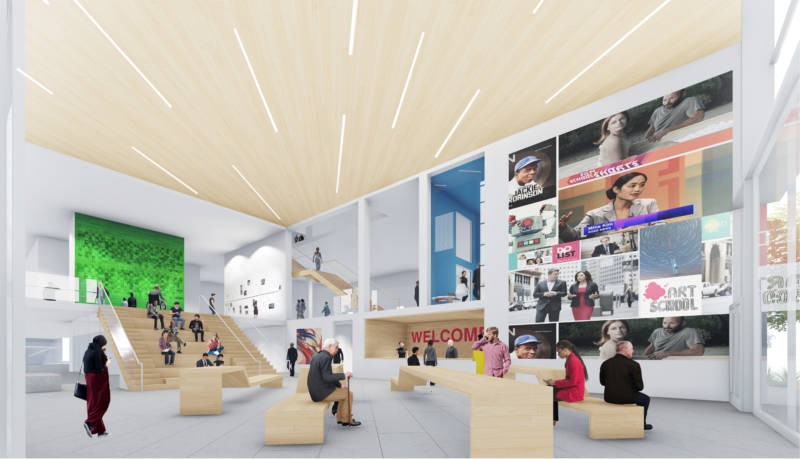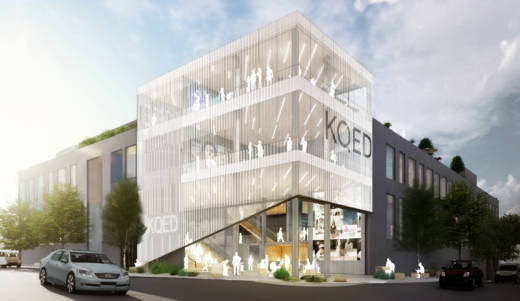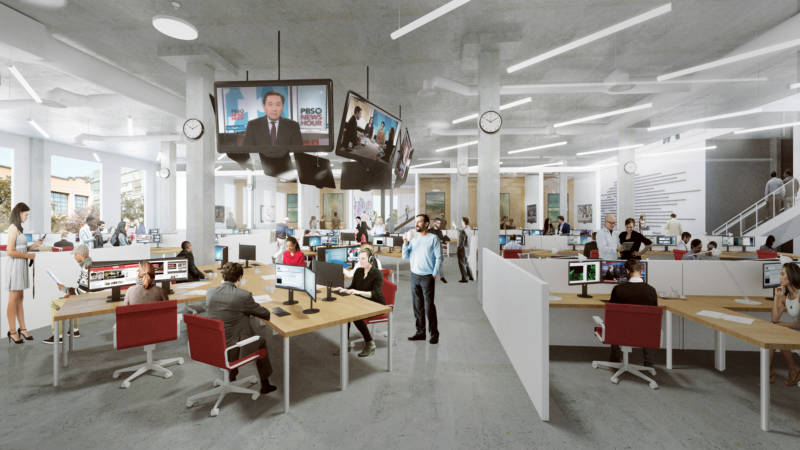Community, transparency, collaboration and innovation are at the heart of the design by EHDD Architects.
KQED’s Board of Directors announced that KQED will be embarking on a major two-year renovation project of its headquarters at 2601 Mariposa Street in San Francisco. The redesigned building is the essential next step in KQED’s transformation to meet the changing needs of the Bay Area community now, and for generations to come. Designed by the award-winning architectural team at EHDD, the new building will showcase KQED’s inclusive, community-minded and ambitious vision for the future of public media.
“Over the past five years, KQED has undergone a dramatic transformation from a traditional broadcaster to a digital multimedia journalism and education service aligned to the 21st century needs of the people of the Bay Area,” says KQED President and CEO John Boland. “As a result, we have experienced tremendous growth in both the number of people we serve and our staff size. Our headquarters building in San Francisco was built for the KQED of 25 years ago, so we must transform the facility for the KQED of today.”
Community has always been at the center of KQED’s mission, and is the guiding principle of the new design, which envisions an accessible building that mirrors the innovative spirit of the Bay Area. The dynamic glass facade of the new headquarters reflects KQED’s commitment to transparency. The lifted corner entry, the expanded new lobby and new programming spaces, including a rooftop event space, create a vibrant and welcoming place to convene, connect and engage with all that KQED does. “KQED has emerged as an important convener of community dialogue and our renovated building will include new spaces where the Bay Area community can come in to connect with our journalists, civic and cultural thought leaders and with each other,” says Boland.

EHDD Principal Rebecca Sharkey adds: “It‘s an honor to create a new building for a thriving media organization that plays such an important role in the Bay Area and beyond. We know that the new building will not only help support KQED’s transformation, but also become an important community space for the neighborhood, the city and the region.”

